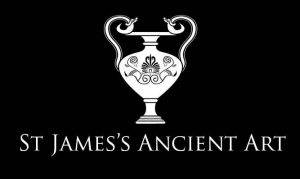In Antiquity, a lamp was originally called a lychnus, from the Greek λυχνος, with the oldest Roman lamps dating back to the third century BC. During the Roman Empire, it became commonplace to use lamps in funeral ceremonies and for public purposes. Over time, the manufacture of lamps increased, and so did the variation in decoration, which depended mainly on the shape and size of the lamp. Common decorative themes depicted on the discus were entertainment scenes, such as gladiators in combat, popular myths, and domestic animals. Early Christian symbols, such as the staurogram, were also used as decorative motives, usually together with depictions of palmettes, palms’ or olives’ branches. The staurogram, combines the Greek letters Tau and Rho and was used originally as an abbreviation for ‘cross’, known in Greek as ‘stauros’(σταυρός).However, between the 4th and the 5th centuryAD, the meaning of the staurogram changed and it became, synecdochetically, a symbol of Christ and his sacrifice. Such symbols are called Christograms and were used as decorative motives by the early Christians. Oil lamps moulded in North Africa and referred to the type Atlante X, Hayes II A, are characterized by a fine clay, glossy bright orange slip, and finely executed decoration to the lamps’ discus and shoulders.
To discover more about the ancient origins of oil lamps, visit our relevant post: Oil Lamps in Antiquity.






